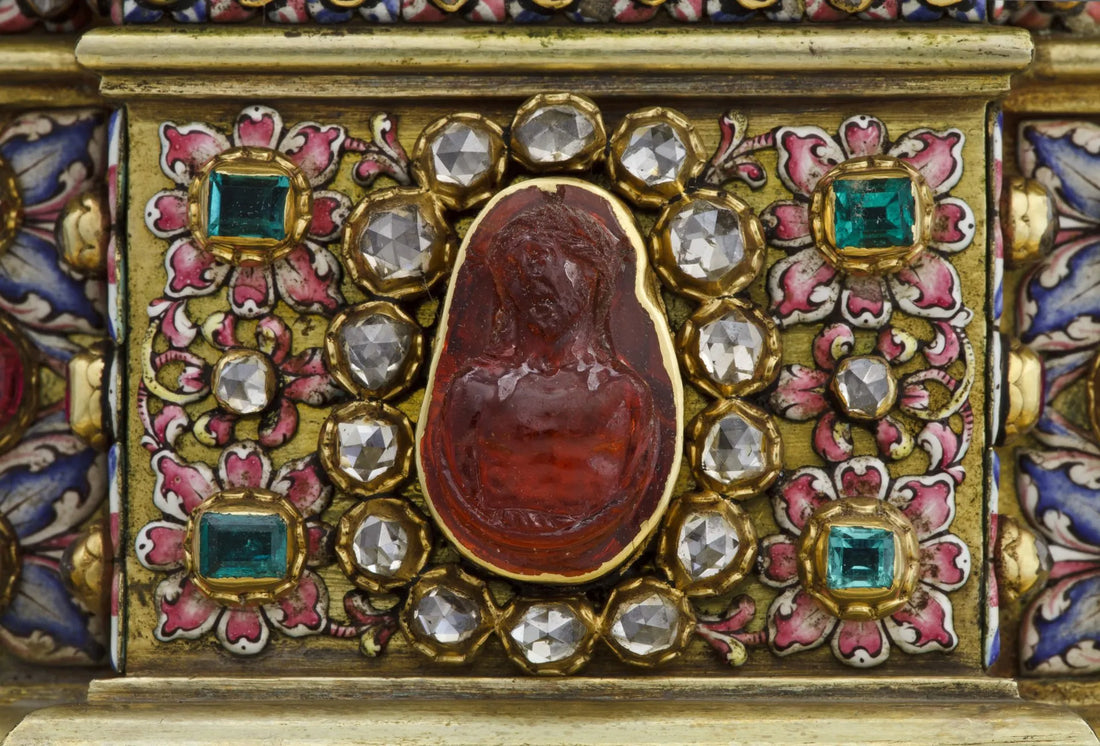
The Colourful World of Gem Garnets
Share
When we think of garnets, the color that comes to our minds is red. As a gem material, it has been known since antiquity and as a mineral, it was defined in a time when names were mainly given based on visual properties. Garnet comes from the Latin granatum, "pomegranate", that in turn is derived from granatus, meaning something along the lines of "with many grains" in a clear allusion to the similarity of the stone’s color with the color of the juicy grains of the fruit. Curiously, ruby in Thai is called "thabthim" precisely after this fruit also. The old name for red gem gar- nets was yet another one. Pliny, the Elder (23-79 CE), the famous Roman naturalist from Pompei, in his 37 volume work "Natural History" refers to them as carbunculus alabandicus that were known to occur namely in India and Portugal at the time. The term carbunculus, translated as anthrax in Greek, alluded to their resemblance to burning coal in transmitted light while alabandicus was a reference to the old city of Alabanda, Turkey, where these gems were known to be traded in Antiquity. Curiously this locality-related term is behind one of the names of a garnet mineral species that will be mentioned further ahead (almandine).

Although red is the immediate hue that we relate to garnet, the truth is that garnets do occur in many colors. Garnet is a collective name for a significant number of min- eral species and mineralogists gather them in what is called a supergroup where there are two gemologically relevant sub-groups: pyralspite (an isomorphic series of aluminium-rich garnets: pyrope, almandine and spessartine) and ugrandite (an isomorphic series of calcium-rich garnets: uvarovite, grossular and andradite). In mineralogy, an isomorphic series is comprised two or more mineral species, called the end-members, with similar crystal structures and slightly different chemical compositions due to the replacement of chemical elements without affecting the crystal structure, thus generating similar crystal forms, hence the name isomorphic from the Greek iso, "same", and morphos, "shape" or "form". The intermediate members of an isomorphic series are called "solid solutions" and virtually all gem garnets are solid solutions on the pyralspite and ugrandite series, meaning that they have mixed compositions and, therefore, varying gemological properties within certain limits. A few decades ago, to properly identify the garnet species or variety, standard gemological testing, namely specific gravity and refractive index measurements, was considered a reliable method. Today, due to the structural and compositional complexity of gem garnets, their identification is further supported by advanced analytical techniques, namely Energy Dispersive X-Ray Fluorescence (EDXRF), Raman spectroscopy and the even more sensitive LA-ICP-MS (Laser ablation-Inductively Coupled Plasma-Mass Spectrometry).
In the photo: Ecce Homo carving in hessonite garnet, probable singalese, late 17th century. © Carlos Pombo Monteiro / Fundação Eugénio de Almeida, Arquidiocese de Évora
The pyralspite isomorphic series includes vivid red to pink to orange gem varieties, with different iron-rich almandine, magnesium-rich pyrope and manganese-rich spessartine compositions. In the trade some of those garnets may be known as rhodolite (rose colored pyrope with almandine component), mandarin garnet (vivid orange spessartine) and malaia garnet (pinkish orange spessartine with pyrope component). Interesting to know that this last one may often occurs in color change varieties, meaning that the color will look different under different light sources (daylight equivalent and incandescent light equivalent). Also interesting is the fact its trade name was originally dubbed in the Umba region (Kenya and Tanzania) from the Swahili malaia, meaning "prostitute" or "out-cast", since they were traditionally rejected for its unusual color. Fortunately, not the case anymore. Almandine garnets are usually brownish red and pyropes tend to more deep red colors. Historically, the chromium-bearing rich-red pyropes from central "Céske Středohoří in Bohe- mia, Czech Republic, with recorded extraction activity before the 14th century, were known in the trade as "Bohemian rubies". Typically in small sizes up to 6 mm, they were highly popular in the 18th and 19th centuries and are behind the establishment of the famous Gemstone Training School in the city of Turnov in 1884. Still today, local jewellers manufacture garnet jewelry in traditional Czech designs. Almandine-pyrope garnets are also known to occur occasionally with asterism, displaying a star effect usually in reflected light. Due to the cubic symmetry of the garnet crystals, four-rayed stars and six-rayed (even twelve-rayed) stars may be observed, sometimes both in the same specimen polished as cabochon or round beads. Photo bellow © Lang Antiques)



